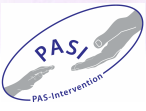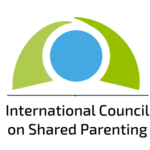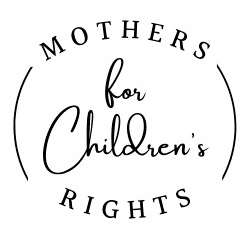BRIEF ON PARENTAL ALIENATION
Primary VAWA 2021 Bill Sponsors:
Representative Sheila Jackson Lee
Senator Dianne Feinstein
Brief Produced by:
A consortium of experts representing a large network of international organizations
April 6, 2022
6. Parental Alienation and Other Forms of Family Conflict
|
6.1 There can be several reasons why a child would resists contact with a parent. The nature of
this resistance, and other factors in the family dynamic, help to determine the reason for the resistance. 6.2 Children who have been moderately to severely alienated from a parent frequently, persistently, and consistently reject them and refuse to communicate with or see them. In milder cases, this resistance is most often seen when the child is with their preferred parent, and less so when in the care of the less favored parent. Over time, and as parental alienation becomes more severe, the child’s resistance increases. 6.3 Children who have been estranged from a parent, meaning they have a justified reason for resistance such as in cases of child abuse, do not often reject the parent persistently, consistently and frequently. Rather, children who have been abused in other ways tend to have considerable ambivalence about their abusive parent and many children minimize the abuse they experienced. These children often protect and make excuses for their abusive parent---they are not likely to reject them. This feature is an important differentiator for alienated and estranged children. 6.4 Some children are pulled into their parental conflicts and get “stuck in the middle.” In this case, the child experiences what is called a loyalty conflict. This family dynamic is different than parental alienation because in this case, the child wants to maintain a positive relationship with both parents. The child is in a difficult situation because both parents try to influence the child to pick their “side,” which can make the child withdrawn and less close to both parents. Sometimes, the child will eventually pick a side in this conflict and reject their other parent in order to stop being in the middle. In such cases, the child eventually becomes alienated from a parent. 6.5 Children who have been alienated from a parent manifest several behaviors that scientific and clinical research has found to be unique for them, meaning that these behaviors are not as likely to be found among children who are in a loyalty conflict or who have been estranged. These manifestations are: • Campaign of denigration: The child repeatedly complains about the parent over and over again to anyone who will listen. The child has internalized the negative attitude of the alienating parent towards the alienated parent. • Frivolous rationalization for the complaint: Irrational or silly reason given for not wanting to see the rejected parent (e.g., mom or dad is “boring”). Children who are alienated will also hold a grudge against a parent far longer than most children (e.g., if they were disciplined for a rule violation) and use it as justification for their rejection. For example, a child may claim mom or dad is “abusive” because they suspended social media use for a week and therefore refuse to spend parenting time with them for weeks or months. • Lack of ambivalence: Good relationships always have ambivalence because no person is all good or all bad. Alienated children do not typically show signs of this: rather, they show splitting uch that the rejected parent is all bad and evil, and the preferred parent is perfect, idealized, and all good. • Independent thinker phenomenon: The child goes out of their way to tell people that their opinions are their own and that their mom or dad did not tell them to think or believe what they do. • Borrowed scenarios: The child will repeat phrases used by the alienating parent nearly word for word or describe stories or past events that they would have had no independent knowledge of (e.g., who the primary caregiver was as a baby, reasons for their parent’s divorce). Some children will also use language to describe the targeted parent that would not normally be used by a child their age, indicating that they have borrowed the phrases from the alienating parent (e.g., a 4 year old saying that mom or dad needs “anger management classes or an 8 year old who informed a psychologist that her “voice under UNCRC Article 12 must be heard”). • Automatic support/reflexive support: The child will automatically choose to defend the alienating parent in any disagreement or argument. This automatic support is often most evident among children whose personal identities are lost due to being fused (alternatively referred to as “enmeshed”) with the alienating parent, as any perceived criticism of the alienating parent is perceived by the child as being a criticism of the self, and it challenges the child’s idealization on the alienating parent. • Absence of guilt: The child is very disrespectful and hostile towards the rejected parent with no visible qualms or guilt. The child shows no concern for the feelings of the rejected parent and the impact of their behaviors on them. • Spread of animosity: The negative feelings the child has for the targeted parent spreads to other people associated with them: step-parents, extended family, friends, even pets. Even though these individuals have done nothing wrong, the children ‘hate’ them with the same amount of hostility as the rejected parent. From the child’s perspective, if the rejected parent is so bad, then everyone associated with them must be bad as well. 6.6 The more severely alienated a child becomes, the more behavioral manifestations the child has been found to express. 6.7 The differentiation of parental alienation from other forms family conflict can be done reliably using what is referred to as the Five-Factor Model. When there is evidence of the following five factors in the family, then it is unlikely that the child is estranged or experiencing a loyalty conflict: 1) The child rejects a parent or resists contact for unjustified reasons; 2) The child previously had a positive attachment/relationship with the rejected parent; 3) The child does not have a history of abuse or deficient parenting with the rejected parent; 4) The child has a preferred parent who has engaged in patterns of parent alienating behaviors over time; and 5) The child has several or most of the manifestations of parental alienation (6.5 above), |









